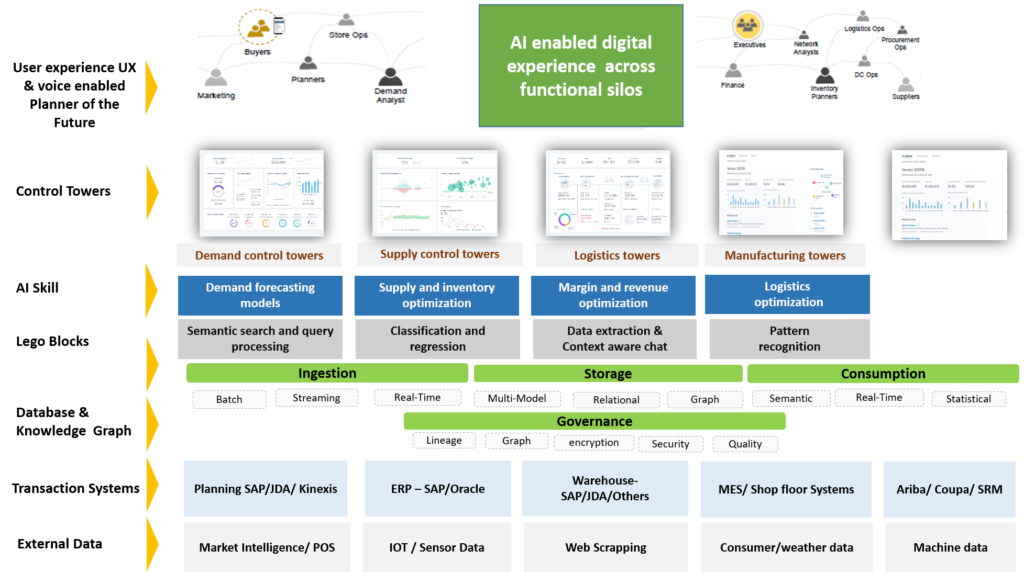Sweat ran uncomfortably down my back on a hot day in Dallas. On the run attempting to balance back-to-back meetings, client commitments and start a new business, I was late for a dinner appointment. As I hurriedly took my seat, I faced John, now a newly promoted principal at a major consulting group. He was my client for over seven years in my prior role as a Research Analyst at AMR Research (now Gartner.) I clumsily stuffed a fat folder into my bag and pushed it under the seat, and filled the awkward silence with an off-handed comment on my frustration with the editing process on the book that I was writing at the time, Bricks Matter. Editing, for me, is like a old-fashioned root canal. I was exhausted. Balancing starting a business, writing a new book and personal life changes was taking its toll.
John smiled. (He is one of the nicest guys I know.) Respectfully, he opened the dialogue asking, “Lora why are you writing a book on supply chain management? Isn’t it a well-researched topic that is passé? I wonder if this is a waste of your time?” He continued to share stories of implementations in marketing departments at consumer products companies, and asked, “Isn’t this far more interesting than supply chain? I see far more excitement in the implementation of front-office applications.” He was extremely dismissive.
I sighed. For me, this dialogue is an ongoing dilemma. Over the course of the last decade, business and technology leaders stuffed supply chain management processes into narrow functional silos. The broader concepts of connecting from the customer’s customer to the supplier’s supplier are largely forgotten. In essence, the implementation of ERP along with CRM, APS, and SRM reduced supply chain to make this silo efficient in a world focused on functional excellence. John had bought this vision hook, line and sinker.
Few companies know their customers, and when supply chain professionals draw a supply chain, they start with the supplier. In my classes, only one student started their supply chain drawing with the client. This is telling. The drawings reflect their paradigms.
FAST Forward Eight Years
My focus is on process flows from the customer’s customer to the supplier’s supplier. My recent blog post on the future of supply chain planning was read by 37,000 readers. It is clear. Interest is high. The blog post prompted a call from John. He wanted to share his new view on supply chain planning and the future architectures, and get insights.
I asked if he remembered our discussion eight years ago. He laughed, and said, “You know Lora, I hate telling you that you when you were right. You probably will not let me forget it.” We had a good laugh.
Our discussion during the next hour was intense. John discussed his vision outlined in Figure 1. In the ensuing hour, I challenged him that he was not challenging the existing paradigms of planning strongly enough.
I believe that the new market is decision support. This is much broader vision than the more limited supply chain planning solutions we have today. How so? Decision support enables the use of analytics to improve decisions by a broader group of employees than planners. In many global supply chain leaders, planners are 5-10% of back office employees. The point? What good is data if it is not usable for the larger organization?
We started with a discussion on control towers. John likes them and his clients are requesting them; but for me, they are dead-end streets. …one not worth the travel. Like portals, they aggregate data and improve visibility, but the architectures are unable to adapt as markets change. Current deployments of control towers perpetuate the current state of functional excellence. Unfortunately, functional excellence does not deliver superior balance sheet results.
Table 1. John’s Vision of Supply Chain Planning

John, then asked, “OK Lora, so I need to think broader. Help me. What do you think the future of decision support looks like?”
My answer? It is a step-change, not an evolution. The new solution has the characteristics of:
Open-source schema on-read architectures like Lokad.
In-memory modeling like Kinaxis.
Deep optimization like OM Partners.
Digital twin like Llamasoft.
Client loyalty like SAP.
A cloud-based architecture like Oracle.
Search like Thoughtspot.
Workforce collaboration like Anaplan.
Cognitive computing like Enterra.
The new solution is outside-in combining engines and rules to activate larger supply chain visions. For example, a focus on customer- centric processes that combine replenishment, transportation and order management optimization logic along with Available-to-Promise and Allocation rule sets. The use of a rules-based ontology to combine customer and product strategies while recognizing that an order is not an order and a customer is not a customer. Using channel data, the solution will enable outside-in processes from the customer back. The new solution will enable the orchestration of substitution logic, and give preference to replenishment based on customer prioritization and market requirements. Today, companies orchestrate replenishment based on orders. The issue? The order is not a good representation of true demand.
The new solutions overlay software robots to enable the autonomous supply chain to sense, learn and act while driving bi-directional orchestration. John and I spent the hour discussing what this looks like. This is the start of autonomous planning.
 We agreed that a starting point is gaining alignment on the definition of supply chain excellence. I shared that I was at INFORMS this week. The number of presentations trying to optimize supply chain randomness surprised me. Let me explain. With the rise in uncertainty, conventional optimization techniques are less effective. John told me some stories of the gaps in his projects.
We agreed that a starting point is gaining alignment on the definition of supply chain excellence. I shared that I was at INFORMS this week. The number of presentations trying to optimize supply chain randomness surprised me. Let me explain. With the rise in uncertainty, conventional optimization techniques are less effective. John told me some stories of the gaps in his projects.
I also discussed my concern with academia. Over-and-over again, I see academics endorsing the elongation of payables to yield cash flow without teaching the basics of supplier development and sourcing policies. The current courses tend to be steeped in tradition reinforcing functional supply chain excellence versus more holistic thinking. The academics’ belief in the power of CRM/APS and SRM runs deep. I disagree. I see these solutions as driving functional excellence and falling short on the delivery of supply chain improvements.Nothing like a deep stimulating debate….
What Comes Next?
The new solutions will not come from consultants. Why? Software development is a different business model than consulting. In consulting, the focus is on the urgent. Consulting is opportunistic. In contrast, in software product development, the focus is long-term based on a product road map. This takes discipline and forward-looking leadership.
Technology consolidators–Infor, JDA, Logility and E2open–will be late stage followers. The reason? Consolidation is draining. It results in disruption of technology road maps, turnover of employees, and redefinition of strategy. The outcome is uncertain.
ERP Platforms Providers. The model disrupts the traditional ERP model. As a result, internal battles of warring factions will slow the response of traditional ERP providers.
Your thoughts? I look forward to hearing from you! What do you think of John’s vision?
Engage with Us:
Open Content Research. Want to benchmark your S&OP processes? Take our S&OP survey, and gain insights on how your processes stack up. This is open content and will be shared widely. In the process, we keep all responses confidential. To help us out, please click on this link.

Imagine Supply Chain 2030. Supply Chain Insights Global Summit, September 3rd-6th, 2019, to be held at UI Labs, Chicago, IL. The focus is on Imagining Supply Chain 2030. No sponsorships, paid speaking sessions or boring sessions with pontificating analysts. Designed for extreme networking, I dub this event as the unconference. At the event, technologists and business leaders work shoulder-to-shoulder to Imagine Supply Chain 2030.
Demand Share Group. Next Face-to-Face Session to be held at Land O’Lakes on June 3rd-5th. In this session, we will invite the most innovative demand planning technologists to share their vision and then work with a visual artist to draw/image demand planning for supply chain 2030.
Network of Networks. This share group now in its sixth year will host its first conferences in November in Antwerp at the Antwerp Management School on November 26th-27th and at UI Labs in Chicago on December 3rd-5th.
and in Chicago in December.







